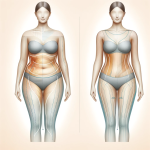Breast Reduction Surgery: Understanding the Procedure, Benefits, and Considerations
Breast Reduction Surgery: Understanding the Procedure, Benefits, and Considerations
Breast reduction surgery, medically known as reduction mammaplasty, is a procedure that reduces the size and weight of large, heavy breasts. This surgery is not only about cosmetic enhancement; it’s often sought for relief from physical and emotional discomfort. In this article, we’ll explore what breast reduction surgery entails, its benefits, and important considerations.
What is Breast Reduction Surgery?
Breast reduction surgery involves the removal of excess breast tissue, fat, and skin to achieve a breast size more proportional to your body and alleviate discomfort associated with overly large breasts. The procedure also aims to improve the shape and lift the breasts.
Who Needs Breast Reduction Surgery?
Women who may consider breast reduction surgery often face physical and emotional challenges, such as:
- Chronic Back, Neck, and Shoulder Pain: Excessive breast weight can lead to pain and discomfort.
- Skin Irritation: Large breasts can cause skin irritation beneath the breast fold.
- Difficulty with Physical Activity: Large breasts can interfere with physical activities and exercise.
- Self-Consciousness: Some women feel self-conscious or experience emotional distress due to their large breast size.
The Procedure: Steps and Techniques
Consultation
The first step is a consultation with a plastic surgeon. Here, you’ll discuss your goals, medical history, and any concerns. The surgeon will examine your breasts, take measurements, and discuss the best surgical approach.
Preparation
Your surgeon will provide pre-operative instructions. This may include guidelines on diet, smoking, and managing medications.
The Surgery
Performed under general anesthesia, the surgery usually takes 2-4 hours. The surgeon makes incisions, typically around the areola and down each breast. Excess tissue, fat, and skin are removed, and the nipple and areola may be repositioned. The surgeon then reshapes the remaining breast tissue and closes the incisions.
Recovery
Post-operative care is crucial. You’ll receive instructions on how to care for your incisions, medications for pain and infection, and when to resume normal activities. Recovery time varies, but most women can return to work within a couple of weeks.
Benefits of Breast Reduction Surgery
- Pain Relief: Reduces the physical discomfort associated with large breasts.
- Improved Physical Activity: Easier engagement in sports and exercise.
- Better Proportioned Figure: Breasts are more in proportion with the rest of the body.
- Increased Comfort: Reduction in skin irritation and indentations from bra straps.
- Enhanced Self-Image: Many women experience a boost in self-esteem and body confidence.
Risks and Considerations
Breast reduction surgery, like any surgery, has risks. These include scarring, changes in nipple or breast sensation, and potential difficulties with breastfeeding. It’s important to discuss these risks with your surgeon.
Conclusion
Breast reduction surgery can significantly improve the quality of life for women burdened by large, heavy breasts. It’s not just a cosmetic procedure; it’s a step towards physical comfort, improved health, and emotional well-being.
Key Takeaways
- Breast reduction surgery addresses both physical discomfort and aesthetic concerns.
- Ideal for those experiencing pain, skin irritation, and self-consciousness due to large breasts.
- Involves removing excess tissue and reshaping the breasts.
- Benefits include pain relief, improved physical activity, and enhanced self-image.
- Understand the risks and have realistic expectations.
Remember, the decision to undergo breast reduction surgery should be made after careful consideration and consultation with a qualified plastic surgeon. It’s a personal journey towards comfort, health, and confidence.








